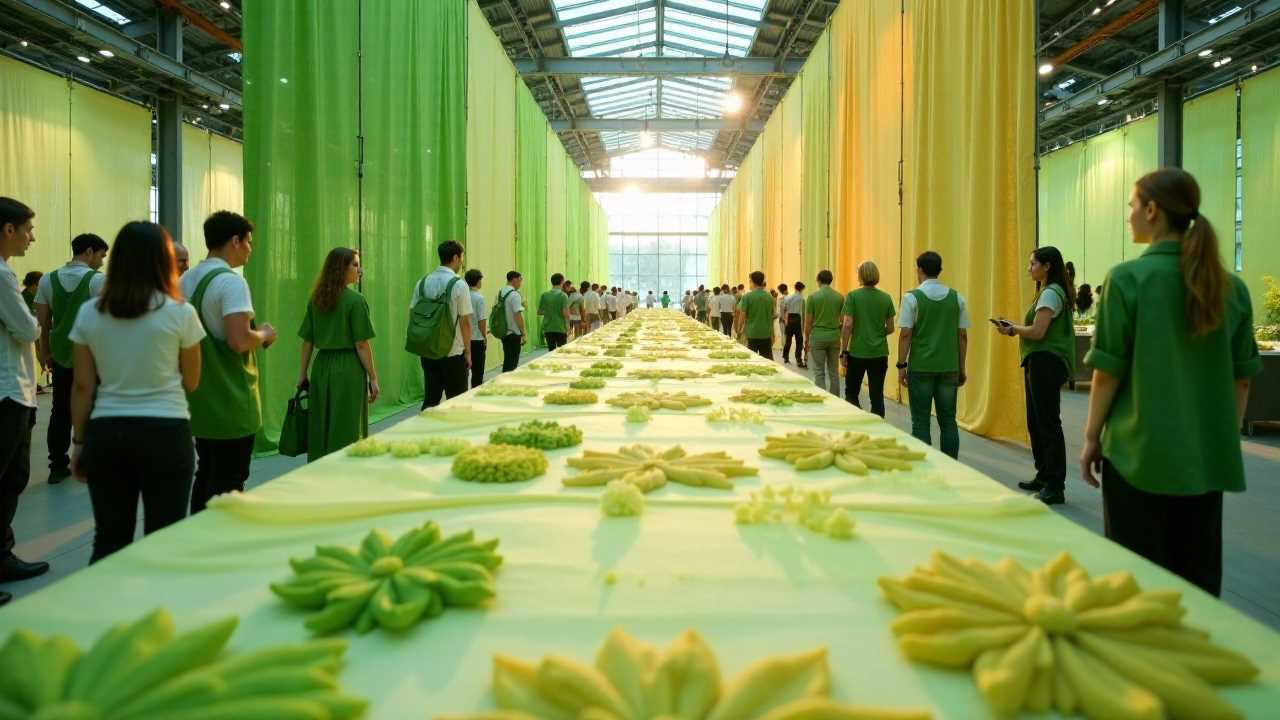
The Intersection of Sustainability and Textile Manufacturing
In the modern landscape of textile manufacturing, the demand for sustainable practices has never been more pronounced. As consumers become increasingly aware of the environmental impact of their choices, the fashion industry is responding by prioritizing eco-friendly materials and processes. This shift not only addresses the pressing issues of waste and pollution but also sets the stage for a new era of couture that harmonizes luxury with responsibility.
Sustainable textile manufacturing encompasses a variety of practices aimed at reducing the ecological footprint of fabric production. This includes the use of organic fibers, recycled materials, and water-efficient processes. By adopting these methods, manufacturers can create high-quality textiles that appeal to the environmentally conscious consumer without compromising on style or elegance.
Couture Meets Sustainability
Couture fashion has long been synonymous with exclusivity and high craftsmanship. However, the integration of sustainability into this realm is redefining what it means to create luxury garments. Designers are now focusing on tailoring techniques that not only enhance the aesthetic appeal of their creations but also ensure that the materials used are sourced ethically.
The rise of sustainable couture is marked by the emergence of brands that prioritize transparency in their supply chains. These brands are committed to using materials that are not only beautiful but also environmentally friendly. By showcasing their efforts in sustainability, they are setting new standards in the industry and inspiring others to follow suit.
Innovative Fabrication Techniques
Fabrication methods in textile manufacturing are evolving rapidly, driven by technological advancements and a commitment to sustainability. Techniques such as 3D knitting and digital printing are revolutionizing the way fabrics are produced. These methods minimize waste by allowing for precise cuts and designs, ensuring that every inch of material is utilized effectively.
Moreover, the use of biodegradable and recycled materials is becoming more prevalent. Fabrics made from recycled plastics, organic cotton, and even innovative materials like Tencel are gaining traction. These options not only reduce the reliance on virgin resources but also contribute to a circular economy where textiles can be repurposed or decomposed at the end of their life cycle.
Trendsetting Embellishment Techniques
Embellishment has always played a crucial role in couture fashion, adding depth and character to garments. However, the approach to embellishment is shifting towards more sustainable practices. Designers are exploring alternative methods that reduce waste while still achieving stunning visual effects.
Techniques such as hand-embroidery using organic threads, the application of natural dyes, and the use of upcycled materials for decorative elements are becoming popular. This not only enhances the uniqueness of each piece but also aligns with the principles of sustainable fashion. By focusing on quality over quantity, designers can create timeless pieces that resonate with consumers looking for authenticity and craftsmanship.
The Role of Tailoring in Sustainable Fashion
Tailoring is an art form that requires precision and skill. In the context of sustainable fashion, it takes on an even greater significance. Tailored garments are often made to last, reducing the need for fast fashion and its associated waste. By investing in well-fitted, high-quality pieces, consumers can contribute to a more sustainable wardrobe.
The resurgence of bespoke tailoring is a testament to this shift. Consumers are increasingly seeking personalized experiences that cater to their individual styles and preferences. This trend not only supports local artisans but also promotes a slower fashion cycle, encouraging individuals to cherish and care for their garments.
Consumer Awareness and the Future of Textile Manufacturing
As awareness of sustainability grows, consumers are becoming more discerning in their purchasing decisions. They are seeking brands that align with their values, prompting a shift in the textile manufacturing landscape. This demand for transparency and ethical practices is pushing manufacturers to adopt more sustainable methods, ultimately benefiting the environment.
The future of textile manufacturing lies in the hands of both producers and consumers. By prioritizing sustainability, we can pave the way for a fashion industry that values quality, craftsmanship, and environmental responsibility. As we move forward, it is essential for all stakeholders to collaborate and innovate, ensuring that sustainable practices become the norm rather than the exception.
In summary, the integration of sustainability into textile manufacturing is transforming the fashion industry. With a focus on couture, fabrication, trendsetting, embellishment, and tailoring, we are witnessing a new wave of fashion that prioritizes both style and environmental responsibility. As we embrace these changes, we can look forward to a future where fashion is not only beautiful but also sustainable, ensuring that we leave a positive impact on the planet for generations to come.
 SportsHollywoodLifestyleFashionHome & GardenTrendsPrivacy PolicyTerms And Conditions
SportsHollywoodLifestyleFashionHome & GardenTrendsPrivacy PolicyTerms And Conditions
